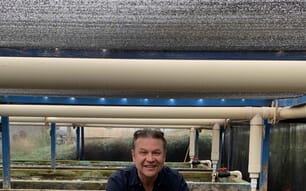The analysis is based on the findings of the country- and species-specific case studies, regional, and specialist subject reviews that are presented in this technical paper. Providing farmers with well-balanced feed at cost-effective prices is a prerequisite to profitable production. Formulation issues, and in particular the provision of species-specific feeds that address the nutritional requirements of the different life stages of the farmed animal (larval, fry, grower, finisher and
broodstock) remain important topics for both commercial and farm-made feed production sectors.
Much of the aquafeeds used in Asia and Africa are either produced on-farm or by small-scale semi-commercial feed manufacturers, and improvements to the quality and preparation of these feeds are likely to bring about improved productivity and cost savings. The small-scale production sector is currently constrained by a number of factors including inadequate access to finance, a lack of technical innovations, an absence of feed formulation and processing knowledge, and training. The potential to develop public-private partnerships with farmer groups or associations to share resources and improve access to improved manufacturing capacity should be considered. The majority of the case studies revealed that farmers across many countries and sectors were unaware of the importance of appropriate feed handling and storage techniques.
The importance of feed management practices in optimizing production parameters needs to be conveyed to farmers. The use and efficacy of automated feeding systems needs to be established, and the use of feed tables, feed and production records needs to be promoted. Farmers need to be provided with simple tools to monitor farm production indices (e.g. feed conversion efficiency and growth rate) and training on how to take corrective actions. In extensive and semi-intensive production systems, there is a need to establish the qualitative and quantitative relationships between natural pond productivity and the impact that the use of supplemental and farm-made feeds have on nutrient cycling and retention in the farmed species. Developing a better understanding of these dynamics is central to optimizing feed formulations and reducing feed costs.
The implications of feed type, formulation and feed management practices on the environmental footprint and economics of the farming operation are important issues that farmers need to take into consideration when planning their farming activities. If farmers understand and can quantify the economic interrelationships between feed type and costs, performance and feed management, they can significantly improve their profitability. Economic tools for this purpose to assist farmers need to be developed. Poor regulatory control and a lack of standards throughout the aquafeed value chain are constraints to feed supply, quality and use. Appropriate aquafeed policy, regulatory rameworks, and feed standards need to be developed in those countries that do not already have them, and institutional capacity needs to be strengthened in those agencies responsible for monitoring and compliance. Training and the dissemination of information to farmers, particularly small-scale farmers that have limited access to the latest technological and management developments, are issues that need to be addressed. Weak extension and information dissemination networks result in low adoption rates of new feed production technologies and management practices.
Consideration should be given to promoting programs that use the local media to provide farmers with extension messages, including, amongst others, up-to date feed ingredient availability, quality, price and supplier information, feed formulation and ingredient inclusion rates.
February 2014



